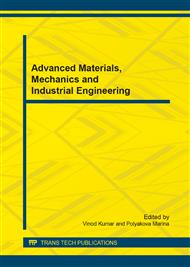p.276
p.281
p.288
p.294
p.298
p.304
p.309
p.317
p.322
Ablative Heat Shield Design for Reentry Vehicle Using Numerical Analysis
Abstract:
At this paper, the thermal behavior of ablative materials as heat shields for reentry vehicles is investigated numerically. A one-dimensional finite difference solver is developed to simulate governing mass and energy equations. Four ablative materials; AVCO 5026-HCG, Carbon-Phenolic, Nylon-Phenolic, and Silica-Phenolic; are considered as a heat shield material for a reentry capsule with the diameter 2.8 meter. A heat flux profile from a simulated trajectory of a reentry capsule is used for investigation the performance and essential thickness of these four ablative materials. The only restriction for this simulation is the ultimate temperature of the backup structure which is beneath the ablative heat shield. At all simulations, the final thickness is defined by reaching the interface temperature, the temperature of the border between the ablative heat shield and solid shell, to 80±0.5 degrees Celsius. In addition, the sensitivity analysis is carried out to investigate the effect of properties variations on Carbon-Phenolic’s thickness for this specific heat flux profile.
Info:
Periodical:
Pages:
298-303
Citation:
Online since:
July 2014
Authors:
Price:
Сopyright:
© 2014 Trans Tech Publications Ltd. All Rights Reserved
Share:
Citation:


